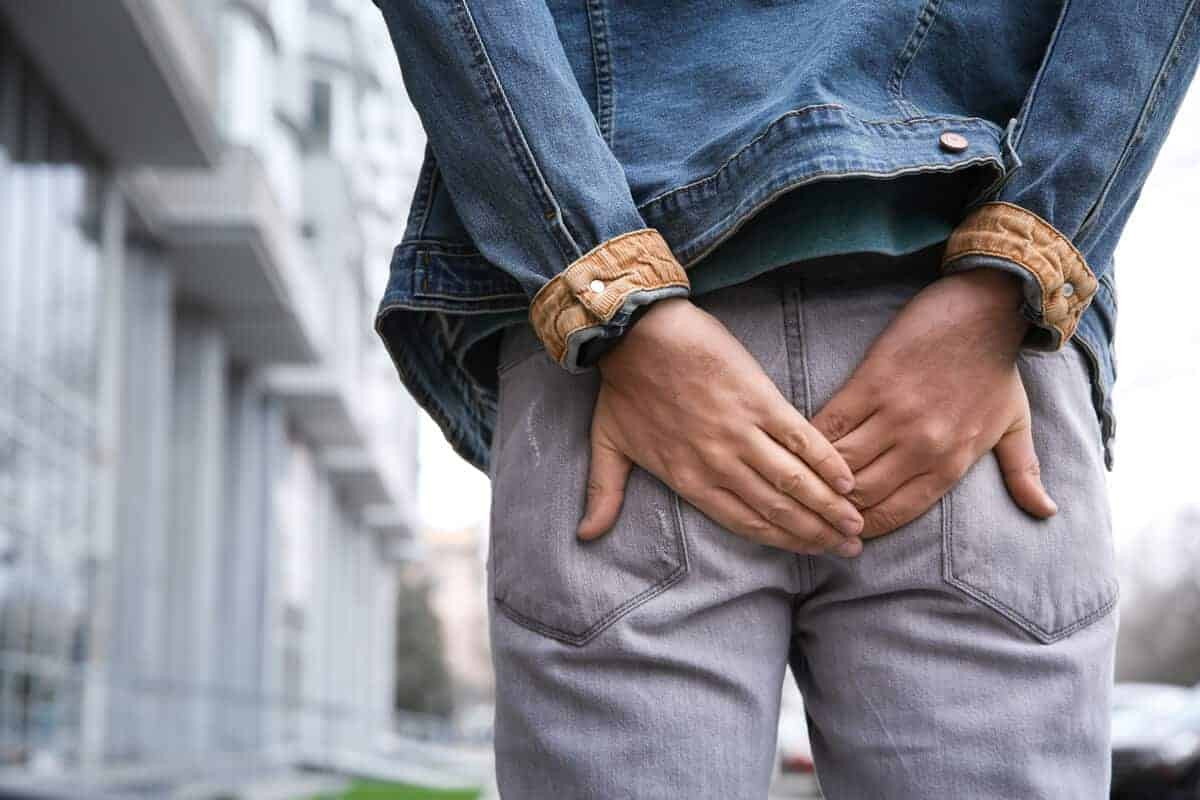Definition
Fecal incontinence is a condition characterized by the uncontrollable passing of stool. Individuals experiencing fecal incontinence may pass stool unintentionally or without conscious control. This condition is attributed to a loss of control in the intestine, and its severity can range from the passage of small amounts of stool to a complete loss of intestinal control.
Some individuals with fecal incontinence may still feel the urge to defecate but find it challenging to retain control until reaching the bathroom. Others may not experience any sensation of urgency, and stool may pass unconsciously. While fecal incontinence can be an uncomfortable condition, treatment options are available to improve its management.
Causes
The control of the intestine depends on the proper functioning of several body parts. Injury or damage to any of them can result in fecal incontinence. These key parts include:
- Pelvic muscles
- Rectum (lower end of the large intestine)
- Sphincter ani muscle (muscle around the anus)
- Anus nerve system
Common causes of fecal incontinence include:
Fecal Impaction
Prolonged constipation can lead to fecal impaction, where hard stool becomes stuck in the rectum. This can weaken and loosen the sphincter ani muscle, making it unable to control the passing of stool. Fecal liquid leakage from the anus can be a complication of fecal impaction.
Diarrhea
The liquid consistency of stool during diarrhea can cause a sudden sensation of urgency to defecate, making it difficult to reach the toilet in time.
Hemorrhoids
External hemorrhoids, in particular, can obstruct the sphincter, preventing it from closing completely and resulting in unintentional passage of stool or fecal slime.
Muscle Damage
Damage to the sphincter ani muscle, often caused by surgery in the anorectal region, trauma, or constipation, can impair its ability to close properly.
Nerve Damage
Injuries during childbirth, chronic constipation, stroke, diabetes mellitus, and multiple sclerosis can lead to nerve damage, affecting the control of sphincter movement. This may result in an inability to feel the urge to use the toilet.
Pelvic Floor Disorders
Women may experience damage to nerves and muscles in the pelvic region during childbirth. Pelvic floor disorders may not manifest immediately but can appear after several years. Complications of this condition include:
- Weakness in pelvic muscles used during bowel movements
- Rectal prolapse, where the rectum protrudes outside the anus
- Rectocele, where the rectum protrudes into the vagina
Risk factor
Everyone can experience fecal incontinence, but certain factors may increase the risk. The risk is higher if:
- Age: Individuals aged over 65 years have a higher risk of fecal incontinence.
- Women who have given birth: Women who have experienced childbirth may be at an increased risk.
- Chronic Constipation: Persistent or chronic constipation over an extended period may contribute to the risk of fecal incontinence.
- Disease or Injury causing Nerve Damage: Conditions or injuries that result in nerve damage can increase the likelihood of fecal incontinence.
Symptoms
Fecal incontinence is characterized by the uncontrollable passing of stool. The condition can be temporary, such as during episodes of diarrhea. However, for some individuals, it becomes chronic or recurrent. People with fecal incontinence may experience an inability to control the sudden urge to defecate, leading to an involuntary bowel movement. This type of fecal incontinence is referred to as urgency incontinence.
Another type of fecal incontinence occurs when individuals do not feel the urge to defecate. This condition is known as passive incontinence. Fecal incontinence may also be associated with other gastrointestinal issues like diarrhea, constipation, or bloating.
Diagnosis
To diagnose fecal incontinence, the doctor will inquire about the symptoms and medical history, and conduct a physical examination. The doctor will ask about the frequency and timing of episodes, diet, medications, and any underlying medical problems. Several tests may be conducted to aid in the diagnosis. These tests include:
- Rectal Examination
- Fecal Culture
- Barium Enema: An imaging test that uses X-rays with a barium contrast to examine the bowel and rectum.
- Blood Test: To rule out any systemic conditions or infections.
- Electromyography: A test to evaluate muscle and nerve function in the rectum.
- Anorectal Ultrasonography
Management
The management of fecal incontinence depends on the underlying cause, and some of the management strategies include:
Diet
Identify and avoid foods or drinks that may contribute to diarrhea or constipation. This can help regulate and manage intestinal movements.
Medication
Depending on the nature of the problem, medications may be prescribed. Anti-diarrheal drugs may be given to slow down bowel movements, while high-fiber diets and increased fluid intake may be recommended for constipation.
Toilet Retraining
This involves establishing a routine for using the toilet, sitting at scheduled times, and using suppositories (drugs inserted anally) to stimulate bowel movements.
Underwear for incontinence
Underwear designed for incontinence can be used as additional protection. This type of underwear is specifically crafted to address the needs of individuals experiencing incontinence, whether due to urinary or fecal issues. These products provide a layer of defense against leaks and accidents. Some brands incorporate technologies to minimize odors associated with incontinence.
Kegel exercise
Kegel exercises focus on strengthening the pelvic floor muscles, which play a crucial role in controlling bowel and bladder functions. These exercises can be beneficial for individuals experiencing fecal incontinence. Consulting with a doctor is crucial to ensure that exercises are performed correctly and are tailored to individual needs.
Biofeedback
Biofeedback is a therapeutic technique that utilizes electronic monitoring to provide individuals with information about physiological processes in their body. In the context of fecal incontinence, biofeedback can help individuals gain better control over their pelvic floor muscles. During biofeedback sessions, sensors are placed in the anus and rectum to monitor muscle activity.The information collected by the sensors is displayed on a computer screen, allowing individuals to see and understand their muscle activity. With the visual feedback, individuals can learn how to control and strengthen their pelvic floor muscles, improving overall muscle tone and function.
Surgery
Surgery is generally considered for severe cases of incontinence, and there are several surgical options available:
- Sphincteroplasty: This procedure involves repairing a torn sphincter, bringing its ends together to strengthen the muscle and tighten the anal sphincter.
- Gracilis Muscle Transplantation: The gracilis muscle, located in the inner thigh, can be moved and placed around the anal sphincter to enhance its strength.
- Artificial Sphincter: An artificial sphincter, typically a silicon ring, is implanted around the anus. This ring can be manually deflated to allow for bowel movements and inflated to close the anus, preventing fecal leakage.
- Colostomy: In severe cases, some individuals may opt for a colostomy. During this surgery, the end of the large intestine is brought through the abdominal wall, creating a stoma. A bag is attached to the abdomen around the stoma to collect stool, bypassing the anus entirely.
Solesta
Solesta is an injected gel approved by the Food and Drug Administration (FDA) in 2011 for the treatment of fecal incontinence. The purpose of this gel is to increase the tissue density around the anus. It is administered by injecting the gel into the anal wall, which effectively reduces or completely resolves fecal incontinence in some individuals. The gel works by thickening the anal tissue, leading to a narrowing of the anus opening. This condition helps tighten the anal muscles. It's important to note that Solesta therapy must be administered and supervised by a doctor.
Complications
Complications of fecal incontinence include:
- Stress: The loss of control over bodily functions, especially the passage of stool, can lead to feelings of shame, frustration, or depression. Individuals with fecal incontinence may attempt to conceal the issue or avoid social interactions.
- Skin irritation: The skin around the anus is soft and sensitive. Repeated contact with feces can cause itching and pain, potentially leading to ulcers and requiring medical treatment.
Prevention
Aging, injury, and other medical conditions can contribute to fecal incontinence. While this condition may not always be preventable, the risk can be lowered by maintaining regular and smooth passage of stool, as well as caring for the strength of pelvic muscles.
Preventing fecal incontinence depends on addressing its underlying causes. Here are some steps:
- Reduce constipation: Exercise regularly, maintain a high-fiber diet, and drink enough water to prevent constipation.
- Treat diarrhea: Addressing the underlying cause of diarrhea, such as intestinal infections, can help prevent fecal incontinence.
- Avoid straining: Straining during bowel movements can weaken the anal sphincter or damage nerves, so it's important to avoid unnecessary straining.
When to see a doctor?
Seeking medical attention for fecal incontinence is crucial. If you or a family member is experiencing fecal incontinence, especially if it is frequent, severe, or causing psychological distress, it's important to consult with a doctor. Early medical intervention can help manage symptoms and improve the overall quality of life.
Looking for more information about other diseases? Click here!
- dr Ayu Munawaroh, MKK
Kivi R. (2019). What you need to know about fecal incontinence. From https://www.healthline.com/health/bowel-incontinence [ Accessed January 10, 2022]
Fecal incontinence. (2020). From https://www.mayoclinic.org/diseases-conditions/fecal-incontinence/symptoms-causes/syc-20351397 [ Accessed January 10, 2022]
Ferzandi TR. (2021). Fecal incontinence. From https://emedicine.medscape.com/article/268674-overview [ Accessed January 10, 2022]
Hoffman M. (2020). Bowel incontinence. From https://www.webmd.com/digestive-disorders/bowel-incontinence [ Accessed January 10, 2022]
Fecal (Bowel) incontinence. (2020). From https://my.clevelandclinic.org/health/diseases/14574-fecal-bowel-incontinence [ Accessed January 10, 2022]
Bowel incontinence. (2021). From https://www.nhs.uk/conditions/bowel-incontinence/ [ Accessed January 10, 2022]
Shah R, Herrero JAV. (2020). Fecal incontinence. StatPearls LC Publishing. From https://www.ncbi.nlm.nih.gov/books/NBK459128/ [ Accessed January 10, 2022]
Ruiz NS, Kaiser AM. (2017). Fecal incontinence. StatPearls LC Publishing.From https://www.ncbi.nlm.nih.gov/pmc/articles/PMC5221273/ [ Accessed January 10, 2022]










